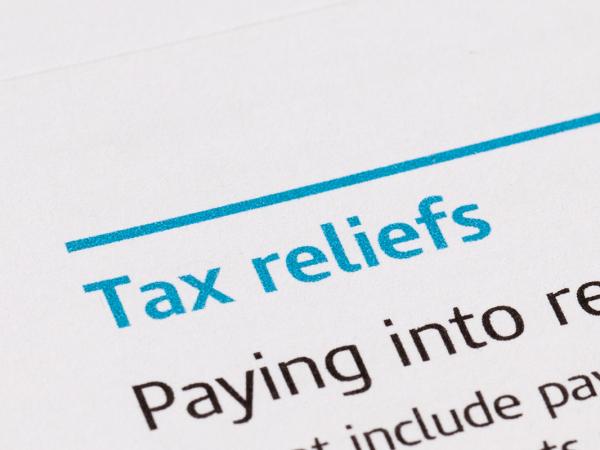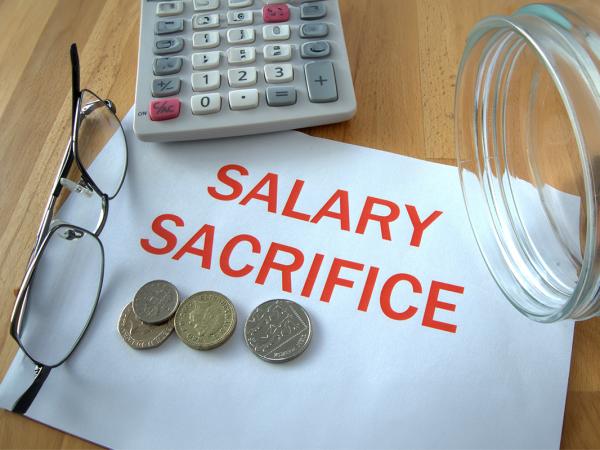Scottish taxpayers: don’t miss out on extra tax relief on your pension contributions
If you are a Scottish taxpayer with taxable income of more than £26,561 per year, and you are paying into a pension scheme, you may be able to claim extra tax relief on top of the tax relief you receive automatically. In this article, we explain the tax relief available for the two main types of pension scheme, as well as when and how you can claim extra tax relief.

Content on this page:
Scottish taxpayers and pension contributions
If you live in Scotland for most of the tax year, you are likely to be a Scottish taxpayer. If you are a Scottish taxpayer, you pay income tax according to the Scottish rates and bands on your employment income and profits from self-employment.
There is more information on how to work out if you are a Scottish taxpayer in our guidance on Scottish taxpayers.
The government encourages you to save for your future by giving you tax relief on contributions you make into a pension scheme. The way you get the tax relief depends on the type of pension scheme. There are two ways of getting tax relief on pension contributions, depending on how the pension scheme is set up. The scheme could either be a net pay arrangement, or a relief at source arrangement.
The problem for Scottish taxpayers
You are normally entitled to tax relief on your pension contributions at the highest rate of income tax that you pay. If you are a Scottish taxpayer, you are entitled to tax relief according to the Scottish rates and bands of income tax. You receive some tax relief on pension contributions automatically, but you may be able to claim additional relief, if you pay tax at a rate higher than the Scottish basic rate of income tax.
Net pay arrangement
If you contribute to a pension under a net pay arrangement, then in most cases, you should receive tax relief automatically at your highest rate of income tax – this means you will not usually need to claim any extra tax relief on your contributions.
Relief at source
If you contribute to a pension scheme that uses relief at source, you will only receive automatic tax relief at a rate of 20%. If you pay tax at a rate higher than the Scottish basic rate of income tax, you may be able to claim additional tax relief.
In 2024/25, this means you may be able to claim extra tax relief if you are a Scottish taxpayer with taxable income of more than £26,561 per year.
Scottish taxpayers and net pay arrangements
Many occupational or works pensions use net pay arrangements.
How tax relief works for net pay arrangements
In this type of arrangement, your employer takes your pension contributions from your salary before they calculate income tax on it. This means that you should automatically receive tax relief at the highest rate of income tax that you pay. This tax relief goes straight into your pension fund.
There is more information about how tax relief works for net pay arrangements in our pensions guidance.
How to claim extra tax relief on pension contributions to a net pay arrangement
You do not usually need to take any action to get the full amount of tax relief to which you are entitled. Normally you will obtain the correct amount of tax relief through your employer’s payroll.
Occasionally, you will not obtain the full amount of tax relief to which you are entitled. If this is the case, you can make a claim to HMRC to obtain the extra tax relief. You normally need to complete a self assessment tax return to do this. In these circumstances, the tax relief will take the form of a reduction in your tax liability, which may result in a tax refund to you. The tax relief will not be added to your pension fund.
Scottish taxpayers and relief at source arrangements
Personal and stakeholder pensions, as well as some occupational or works pensions, use relief at source arrangements.
How tax relief works for relief at source arrangements
In this type of arrangement, you pay your pension contributions after your employer has calculated and deducted income tax from your pay. The amount of your pension contribution is treated as being net of basic rate income tax. Your pension scheme claims tax relief at the basic rate of income tax from HMRC and puts this tax relief into your pension fund. The pension scheme should do this automatically.
If you are a non-taxpayer, or only pay income tax at the Scottish starter rate of income tax (19%), you still receive 20% tax relief automatically, if you are in a relief at source arrangement. HMRC do not ask you to pay back the excess tax relief in this situation.
If your highest rate of Scottish income tax is the intermediate rate of 21%, you can claim an extra 1% tax relief on your pension contributions, if you are in a relief at source arrangement.
How to claim extra tax relief on pension contributions to a relief at source arrangement
If your highest rate of income tax is higher than the basic rate of income tax, you are entitled to extra tax relief, over and above what the pension scheme claims, as shown in the example of Clyde above.
If you wish to claim the extra tax relief, you need to let HMRC know about your pension contributions. There are two main methods available for claiming the extra tax relief:
- If you normally complete a tax return
-
If you normally complete a self assessment tax return, you should tell HMRC about your pension contributions, and claim any tax relief, by completing the appropriate section on your tax return.
The tax relief will reduce your overall tax liability, which may result in a tax refund to you. The tax relief will not be added to your pension fund.
- If you do not normally complete a tax return
-
If you do not normally complete a self assessment tax return, you should contact HMRC and give them details of your pension contributions to claim the extra relief. You can do this in the following ways:
- On form P810 Tax Review, which you can obtain by telephoning HMRC
- Providing the information over the phone by telephoning HMRC
- Writing to HMRC with information about your contributions.
If you pay tax through the pay as you earn (PAYE) system, you will receive the tax relief through your PAYE tax code. The tax relief will show itself through lower income tax deductions from your pay.
The tax relief you receive through PAYE may be an estimate, until you confirm your pension contributions for the tax year. If the estimate is wrong, you may be able to claim a tax refund after the end of the tax year, or, if you received too much tax relief, you might have to pay some extra tax.
Where can I find more information?
You can find more information about other aspects of pensions in our dedicated tax guide.
In our pensions guidance, you can also find more information about tax relief on pension contributions and about how tax relief on pension contributions is given.
You can find more information about Scottish income tax on our page Scottish income tax: more detail.



